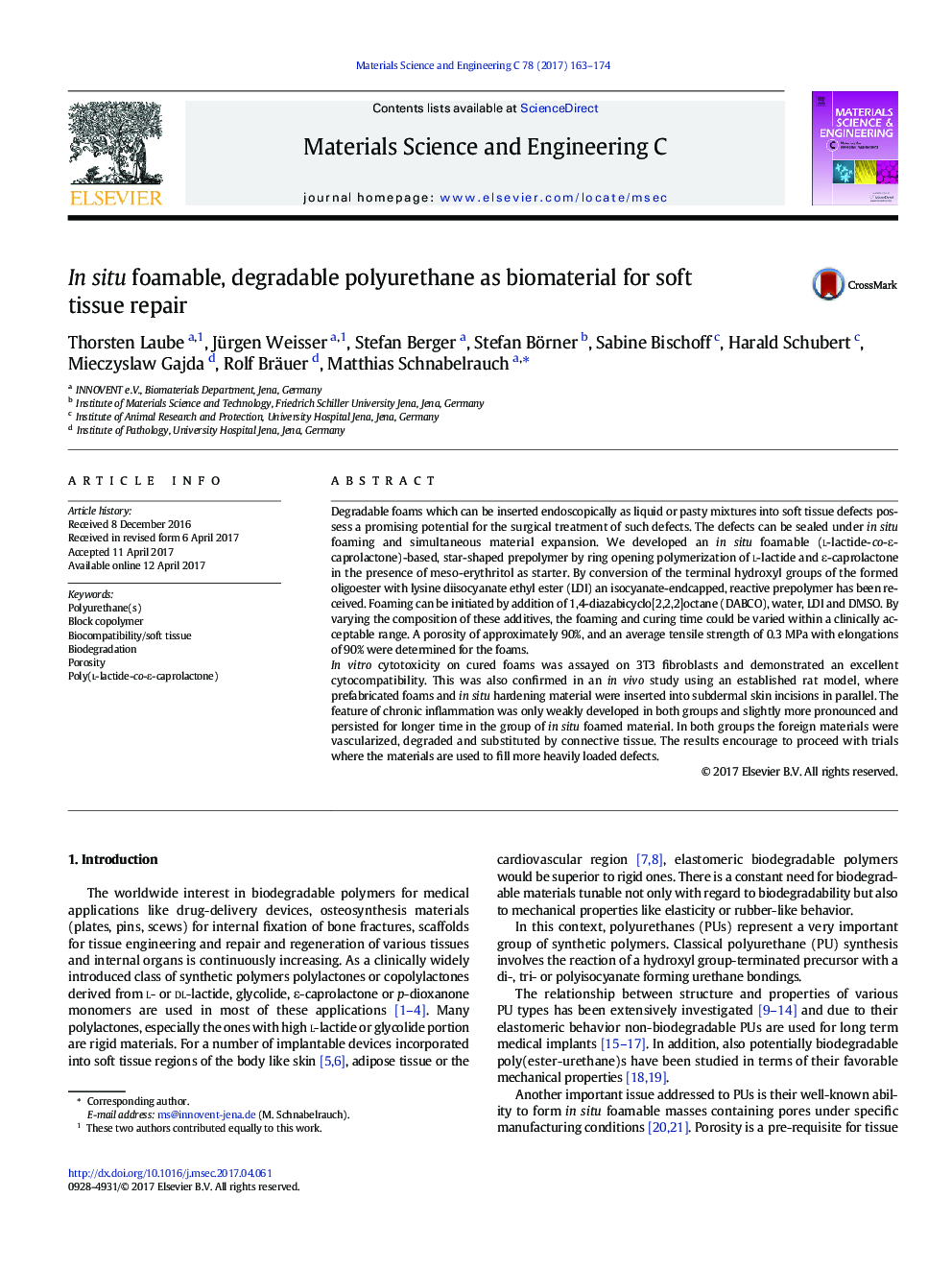| کد مقاله | کد نشریه | سال انتشار | مقاله انگلیسی | نسخه تمام متن |
|---|---|---|---|---|
| 5434402 | 1509143 | 2017 | 12 صفحه PDF | دانلود رایگان |
- An isocyanate-terminated four-arm prepolymer is prepared for reproducible foaming.
- Reactive prepolymer can be cured in the presence of an amine within few minutes.
- The prepolymer is injectable forming degradable, firm, and elastic foams in situ.
- In situ processed foams are non-toxic inducing only a weak foreign body reaction.
Degradable foams which can be inserted endoscopically as liquid or pasty mixtures into soft tissue defects possess a promising potential for the surgical treatment of such defects. The defects can be sealed under in situ foaming and simultaneous material expansion. We developed an in situ foamable (l-lactide-co-ε-caprolactone)-based, star-shaped prepolymer by ring opening polymerization of l-lactide and ε-caprolactone in the presence of meso-erythritol as starter. By conversion of the terminal hydroxyl groups of the formed oligoester with lysine diisocyanate ethyl ester (LDI) an isocyanate-endcapped, reactive prepolymer has been received. Foaming can be initiated by addition of 1,4-diazabicyclo[2,2,2]octane (DABCO), water, LDI and DMSO. By varying the composition of these additives, the foaming and curing time could be varied within a clinically acceptable range. A porosity of approximately 90%, and an average tensile strength of 0.3 MPa with elongations of 90% were determined for the foams.In vitro cytotoxicity on cured foams was assayed on 3T3 fibroblasts and demonstrated an excellent cytocompatibility. This was also confirmed in an in vivo study using an established rat model, where prefabricated foams and in situ hardening material were inserted into subdermal skin incisions in parallel. The feature of chronic inflammation was only weakly developed in both groups and slightly more pronounced and persisted for longer time in the group of in situ foamed material. In both groups the foreign materials were vascularized, degraded and substituted by connective tissue. The results encourage to proceed with trials where the materials are used to fill more heavily loaded defects.
Journal: Materials Science and Engineering: C - Volume 78, 1 September 2017, Pages 163-174
